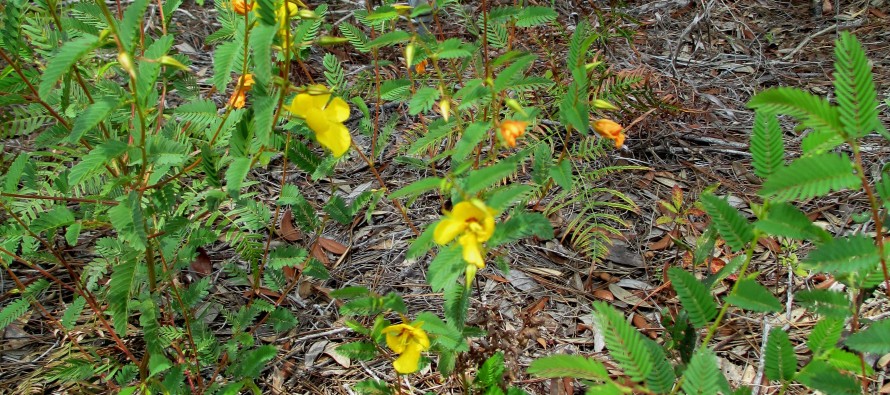Weed of the Week: Partridgepea

Written by: Garret Montgomery, Jason Bond, and Tom Eubank
Partridgepea
Family: Caesalpinia
Scientific Name: Chamaecrista fasciculata (Michx.) Greene
Synonyms: Sleepingweed, Sensitive plant
Partridgepea is an erect, summer annual plant with alternate, compound leaves. Each compound leaf generally contains from 8 to 36 leaflet pairs. Each petiole contains a small gland underneath the first leaflet pair. A unique characteristic of partridgepea is that leaves fold when touched, hence the synonym “sensitive plantâ€. Plants may be 1 to 4 feet in height, and stems become woody as plants mature. Once partridgepea reaches reproductive stages, plants contain large yellow flowers and form oblong pods, similar to soybean. It thrives in areas that have recently been burned but is also found in woodland edges, pastures, disturbed sites, and agricultural fields.
Partridgepea is native to the midwestern and eastern United States. It is found in Mississippi, but it is generally not a common weed in agricultural fields in most parts of the state. It is often used as a wildlife forage because of the variety of species that feed off of the plant. In some areas, partridgepea can become a problem in pastures because of its toxicity to livestock where populations are dense. It can cause moderate digestive tract irritation and diarrhea.
Bryson, C.T. and M.S. DeFelice. 2009. Weeds of the South. Athens, GA: University of Georgia Press. pp. 139.







Does the sensitive nature of this plant is similar to Mimosa pudica (Touch Me not plant)?
That is correct. The leaflets fold up in response to touch.